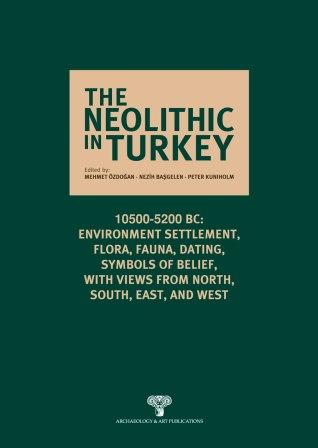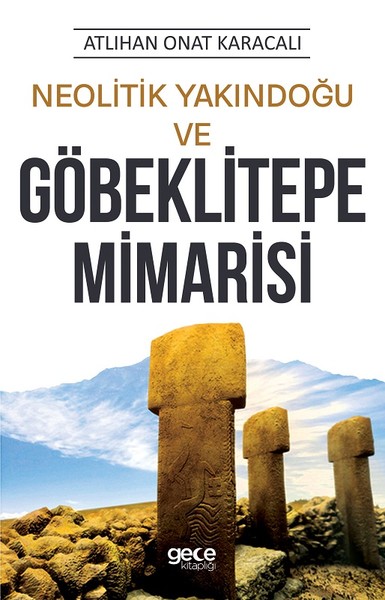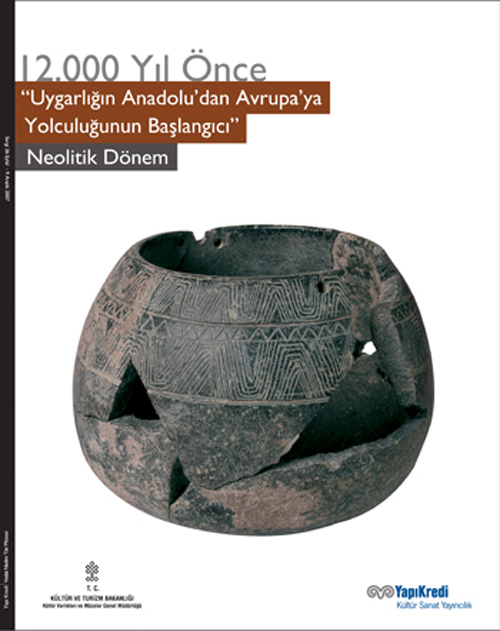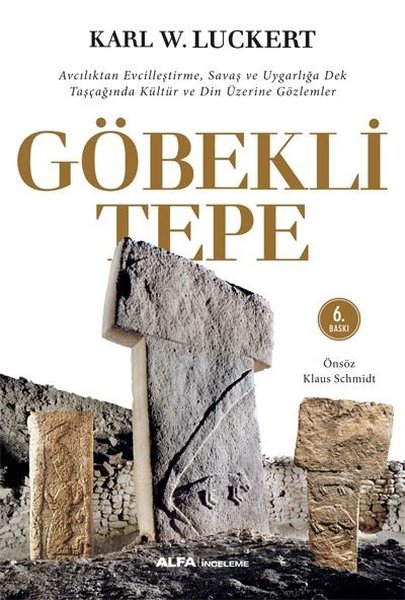Neolithic Period in Anatolia
Uncovered bulls head from the northeast platform in building 77, Çatalhöyük (Photo: Jason Quinlan)
The Neolithic and Chalcolithic Periods
From the ninth millennium BC, sedentism and incipient food production developed in southeastern Anatolia. Aceramic Neolithic villages, such as Cafer Höyük and Gritille in the Euphrates Valley, contained rectangular houses built in timber and mud bricks on stone foundations, an architectural tradition surviving into the present. At Çayönü near Ergani in the upper Tigris area, large houses contained remains of locally domesticated cereals, sheep and goat bones, and some of the earliest copper artifacts ever discovered. The obsidian and flint tools of this period are closely related to the Syro-Mesopotamian variant of the Pre-Pottery Neolithic B tradition. In the central Anatolian lake district, Hacilar, Can Hasan III, and Suberde III have mud-brick houses with red-painted floors, fixed-hearth ovens, and intramural burials, as well as a locally developed flint tool tradition.The nature of the transition to the Ceramic Neolithic (ca. 6500–5500 BC) is still unclear. Tepecik and Kumartepe in the southeast, Mersin and Tarsus in Cilicia, all closely related with the Amuq phases A and B; Hacilar IX–V, Can Hasan I, Erbaba I–II; and, above all, Çatalhöyük in central Anatolia are the most outstanding sites of this period, with their characteristic architecture and abundant plastic art. Late Neolithic traditions continue into the Chalcolithic Period (5500–3200 BC) at sites such as Can Hasan, Beycesultan, Mersin, and Tarsus. Tools, weapons, and jewelry were increasingly made of copper. The first fortified settlements were built at this time, but art declined, except on painted pottery. Southeastern Anatolia was constantly exposed to cultural stimuli from Mesopotamia. At Samsat and Mevkii Karatut, traces of the Sumerian Uruk expansion along the Euphrates (3600–3400 BC) were found. That contact apparently prepared the ground for the urbanization of Anatolia.
Reference: Zohar, Mattanyah. "Anatolia." In The Oxford Companion To Archaeology. : Oxford University Press,, 2012.
Books
 The neolithic in Turkey : 10500-5200 BC: environment settlement, flora, fauna, dating, symbols of belief, with views from North, South, East and West by Call Number: DR431 .N46 2014ISBN: 9786053962892
The neolithic in Turkey : 10500-5200 BC: environment settlement, flora, fauna, dating, symbols of belief, with views from North, South, East and West by Call Number: DR431 .N46 2014ISBN: 9786053962892Early Farming in Central Anatolia by
Call Number: GN776.32.T9 F55 2014ISBN: 9781407313092Publication Date: 2014-09-12 The Neolithic of central Anatolia : internal developments and external relations during the 9th-6th millenia CAL BC by Call Number: DR431 .N463 2002ISBN: 9758070525
The Neolithic of central Anatolia : internal developments and external relations during the 9th-6th millenia CAL BC by Call Number: DR431 .N463 2002ISBN: 9758070525 Çatalhöyük Anadolu'da bir neolitik kent = Çatal Hüyük : a neolithic town in Anatolia by Call Number: DS156.C35 M4420 1967ISBN: 9750805224
Çatalhöyük Anadolu'da bir neolitik kent = Çatal Hüyük : a neolithic town in Anatolia by Call Number: DS156.C35 M4420 1967ISBN: 9750805224 Neolitik Yakındoğu ve Göbeklitepe mimarisiCall Number: DS156.G59 K37 2018
Neolitik Yakındoğu ve Göbeklitepe mimarisiCall Number: DS156.G59 K37 2018 12000 yıl önce "Uygarlığın Anadolu'dan Avrupa'ya yolculuğunun başlangıcı" neolitik dönemCall Number: GN776.32.T9 Y55 2007ISBN: 9789750812972
12000 yıl önce "Uygarlığın Anadolu'dan Avrupa'ya yolculuğunun başlangıcı" neolitik dönemCall Number: GN776.32.T9 Y55 2007ISBN: 9789750812972Humans and Landscapes of Çatalhöyük by
Call Number: DS156.C35 H86 2013ISBN: 9781898249306Publication Date: 2013-09-15The Neolithic in Turkey by
Call Number: GN776.32.T9 N461 2011ISBN: 9786053961505Publication Date: 2011-12-31Neolithic Cultures of Western Asia by
Call Number: GN776.32.N4 S57 1974ISBN: 0127857958Publication Date: 1974-01-01Küçük Asya'nın tarihöncesi : karmaşık avcı toplayıcılardan erken kentsel toplumlara
Call Number: Küçük Asya'nın tarihöncesi : karmaşık avcı toplayıcılardan erken kentsel toplumlaraISBN: 9786059389037


